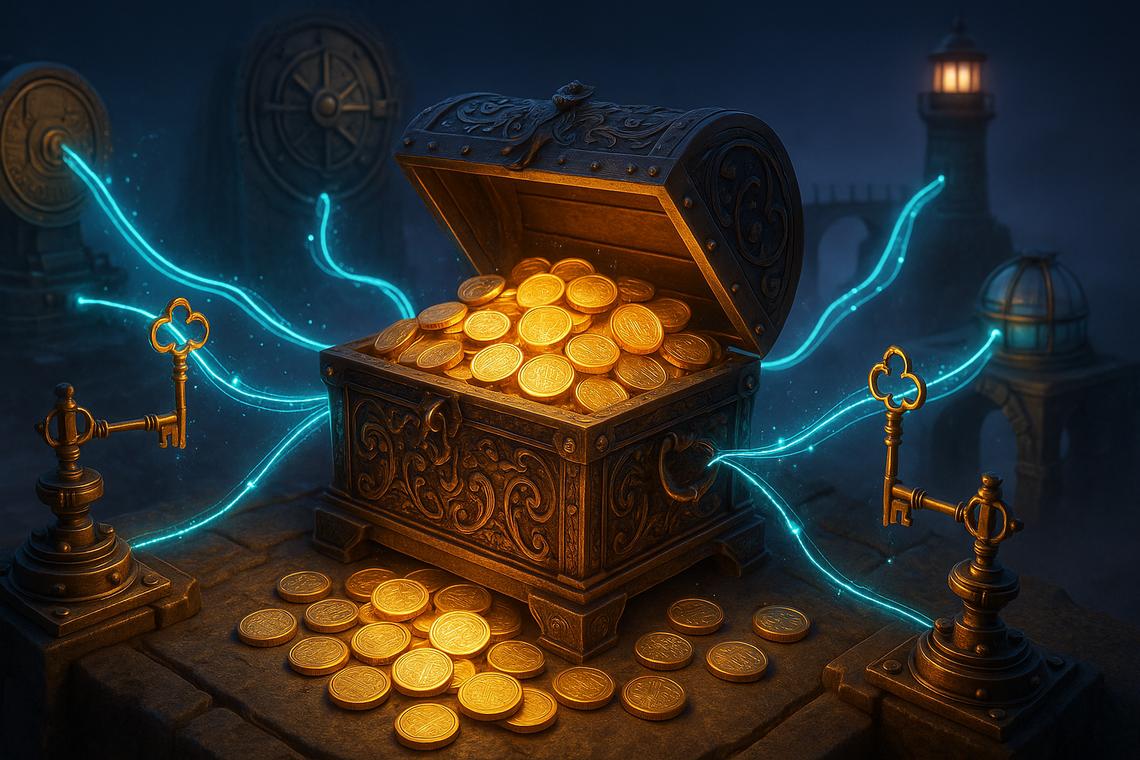A new governance proposal aims to unlock major ecosystem upgrades from the cardano treasury as the network prepares its roadmap for 2026 and beyond.
Why is Cardano seeking 70 million ADA from its Treasury?
A coalition of core Cardano entities has submitted a budget proposal requesting 70 million ADA from the network Treasury to finance critical infrastructure. The initiative is framed as a coordinated step into 2026, focused on long-term ecosystem expansion and competitiveness across decentralized finance and real-world asset markets.
The proposal, dated Nov. 28, 2025, positions the funding as essential to close key gaps that have limited Cardano’s DeFi growth so far. Moreover, proponents argue that a strategic allocation now can accelerate integrations that might otherwise take years to materialize through fragmented efforts.
Who is behind the new Cardano funding initiative?
The effort is led by a group sometimes referred to as the Cardano “Pentad”: Input Output (IOG), EMURGO, the Cardano Foundation, Intersect, and the Midnight Foundation. These organizations together represent the main development, commercial, governance, and privacy-focused arms of the ecosystem.
Cardano founder Charles Hoskinson highlighted the move publicly, describing it as the first joint proposal from this Pentad. However, final approval does not rest with these entities alone, as the funds must still pass formal governance checks under the network’s constitutional framework.
What does the 70 million ADA budget aim to build?
The requested budget is structured around five core pillars of cardano core infrastructure. According to the release, the funds would support onboarding tier-one stablecoins, building institutional custody and wallets, expanding advanced on-chain analytics, deploying robust cross-chain bridges, and integrating globally recognized pricing oracles.
Together, these areas are presented as Cardano’s “missing foundational utilities”. Moreover, the coalition argues that without this stack, it will be difficult to support competitive DeFi markets, large-scale real-world asset tokenization, or sustained institutional participation on the chain.
How will the funds be governed and approved?
Even if the community welcomes the initiative, the cardano treasury cannot release funds automatically. The proposal must first be approved by Delegated Representatives, who act as elected governance participants, and then by the Constitutional Committee. Only after these checks can any ADA be formally allocated from the Treasury accounts.
Intersect, which is taking the role of administrator for the process, has its mandate supported and endorsed by its governing board. That said, the organization will operate within the oversight structures defined by Cardano’s evolving constitutional model, which aims to balance efficiency with accountability.
Which integrations are considered most critical?
One of the headline targets is tier-one stablecoin onboarding, considered crucial for both DeFi liquidity and real-world asset settlement. In parallel, the proposal emphasizes institutional custody and wallet solutions to make it easier for regulated entities to hold and transact ADA and other Cardano-based assets.
The plan also highlights advanced cardano on chain analytics as a priority, aiming to provide deeper transparency for regulators, developers, and investors. Furthermore, improved analytics could strengthen risk management tools across lending protocols, decentralized exchanges, and tokenized asset platforms.
Why are cross-chain bridges and pricing oracles part of the plan?
Alongside the other pillars, the Pentad is pushing for secure cardano cross chain bridges to connect Cardano with major external networks. These bridges are seen as vital to unlock additional liquidity, improve asset mobility, and prevent the ecosystem from becoming isolated from broader crypto markets.
The proposal also includes globally recognized cardano pricing oracles to deliver reliable market data for on-chain applications. However, contributors stress that the focus is on partnering with established providers to reduce integration risk, rather than building every component from scratch.
What role do negotiations with external partners play?
The core entities report that they have already advanced negotiations with multiple tier-one integration partners in recent months. These discussions cover areas such as stablecoin issuers, institutional service providers, analytics platforms, bridge operators, and oracle networks.
Intersect’s position as administrator is designed to coordinate these efforts and ensure accountability across counterparties. Moreover, by centralizing negotiation under a governed structure, the group aims to avoid duplicated work and secure more favorable commercial terms.
How does this proposal relate to recent Cardano network issues?
The funding request comes shortly after a temporary chain partition incident on the Cardano blockchain. According to Intersect, a crafted, malformed delegation transaction triggered the event, exploiting a bug in a cryptographic library that had first been identified in 2022 on the Preview testnet.
The bug caused the network to briefly split into two chains before the issue was mitigated. That said, the episode has renewed focus on rigorous infrastructure, monitoring, and analytics. Supporters argue that the new budget, if approved, will help strengthen Cardano’s resilience alongside its DeFi and real-world asset capabilities.
In summary, the 70 million ADA cardano treasury proposal marks a major attempt to coordinate funding for stablecoins, custody, analytics, bridges, and oracles. Its outcome will signal how Cardano’s on-chain governance prioritizes competitiveness, security, and institutional readiness going into 2026.
